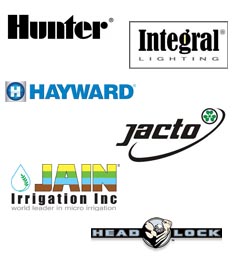
Repairs and replacements of water well equipment is typically expensive. Below are some basic steps you can take to maximize the life of your well, water pump, and pump motor.
1. Check Valves
Install check valves to protect your water pump from losing prime and being forced to work to regain prime. Normally, a check valve should be in place for every 250 feet of deep well depth. Even shallow wells should have a check valve (or foot valve).
Most pumps have an integrated check valve. However, installing an additional check valve at the topside of your well or along the well pipe can reduce the load on the internal valve of your water pump and extends water pump life.
2. Low Water Cutoff
Have a low water cutoff installed in order to protect your well pump motor against overheating in case the water level drops.
3. Smart Tank
Preserve your water pump by reducing its cycling rate by using a smart tank or another device for water pressure regulation.
4. Amperage and Temperature
If the pump motor feels hot to touch, the water pump motor may be running hot. Check the motor draw (amperage) while the motor is running. If the amps being drawn are significantly over the amperage stipulated on the motor’s data tag, there may be a wiring or mechanical issue requiring professional attention.
5. Pump Circuit Voltage
Check voltages available on your pump’s motor circuit. Some motors can fail prematurely if forced to function at voltages below the voltage range for which they are designed. Normally, pump manufacturers specify that voltage must be within ten percent of specification.
6. Pump Installation
The submersible well pump must be installed sufficiently far away from the well bottom, in order to avoid drawing in dirt or debris that can damage the pump or impede its optimal operation.
7. Pump Mounting
Your well pump and all pipes must be protected from twisting that can be caused by the start-up of the motor. Have your system inspected to ensure every part of the system is properly secured.
8. Pump Maintenance
Perform pump maintenance and have inspections as needed. Replace bearings, impellers, and other internal parts as often as necessary (as early as four to five years from the time of installation). This can help prevent the premature need for a complete equipment replacement.
9. Pump Lubrication
Some well pump motors (above ground) require lubrication periodically. Use manufacturer’s recommended oil, rated specially for electric motors. Caution: Do not lubricate a motor that was not designed to be lubricated.
10. Pump Noises
Listen to your water pump while it is running. If you notice increased motor noise, such as grinding or screeching, or whining, your motor or its mechanical parts may require urgent repair to prevent breakdown.
11. Sediment filter
A sediment filter may be necessary for above-ground water pumps. Most installers place a filter past the water pump, or the pressure tank instead of before these parts. But, if the sediment level is high, then it is advisable to place a sediment filter before the point at which water enters the water pump. This can significantly increase the life of your well pump in such cases.
12. Short cycling
There are lots of reasons that can cause your well pump to rapidly cycle on and off. It is important to maintain more consistent water pressure in the tank to prevent shortening the life of your water pump.
13. Water chemistry
Highly corrosive water can adversely impact the life expectancy of your water well pump’s impeller and various other parts. Install a water treatment system to remove corrosive pollutants, if needed.
14. Water flow rate
Submersible pumps require adequate rate of water flow for adequate cooling. If flow rate is insufficient, or runs below specifications, the well pump life can be reduced.
15. Water temperature
If your water pump is handling hot water, for example, from a thermal spring, ensure that the incoming water temperature does not exceed your pump’s rating. Forcing the pump to operate under temperatures that are too hot can shorten its life span.
16. Water Pipe Leaks
Check for leaks throughout your water pipe system to prevent excessive running of the well pump. This increased workload can shorten the life of the pump. Symptoms of pipe leaks include leaks in the well itself or air in faucets.
17. Heavy Use
Keep in mind that running a washing machine, dishwasher, multiple showers, filling a swimming pool or pond keep the well pump continuously running. Punishing your well pump by extremely heavy use constantly over time can significantly shorten the life of your well pump, or even damage the motor.
For More Information
For more information about how to maintain your water well system, contact Irrigation Outlet to speak to one of our water well maintenance experts to discuss the specifics of your particular water well.





